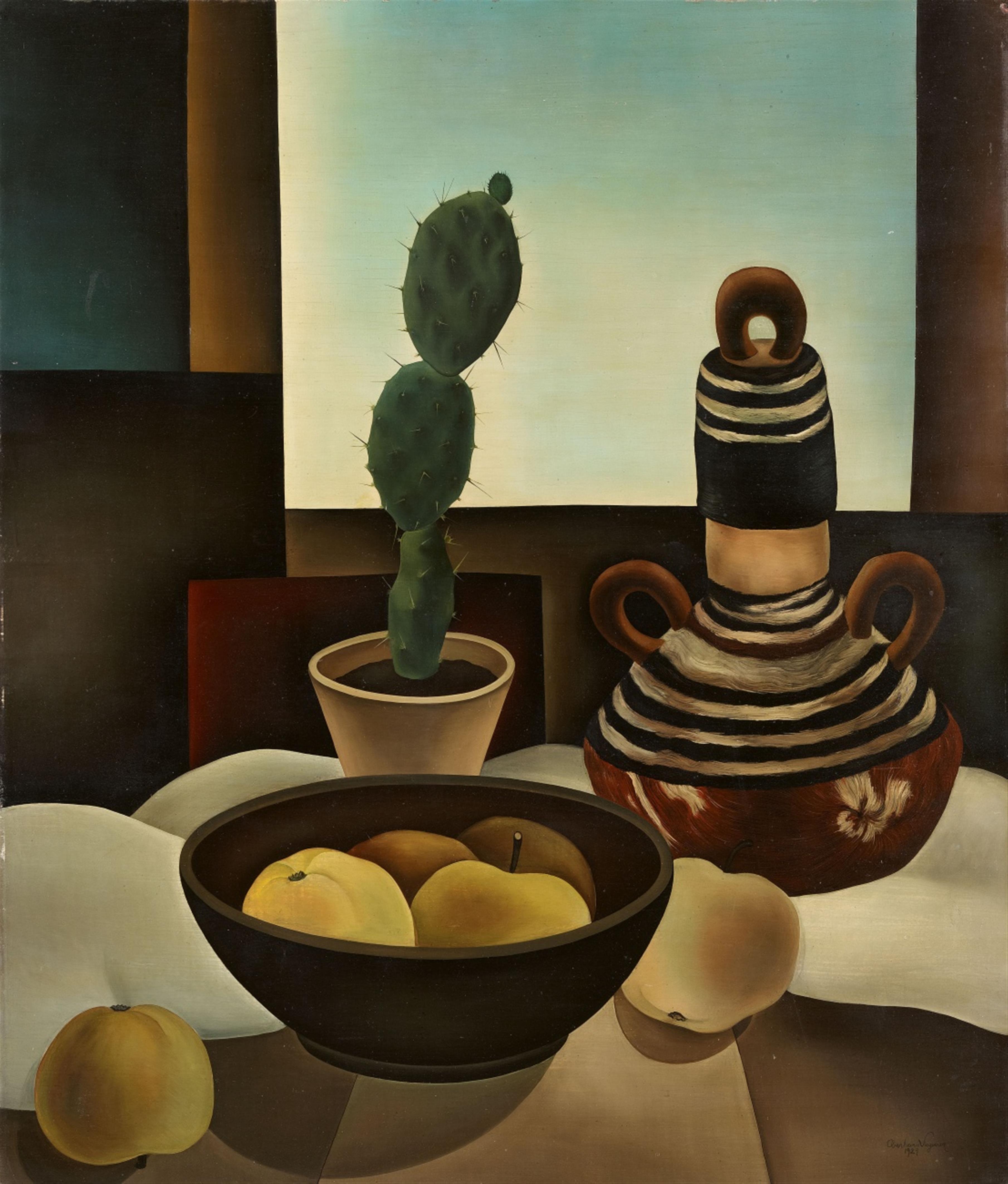Eberhard Viegener
Stilleben mit Tongefäss, Kaktus und Äpfeln
1927
Oil on panel 60.5 x 51 cm Framed (original wooden frame). Signed and dated 'Eberhard Viegener 1927' in grey-brown lower right. - Frame-related rubbing with losses of colour in the margins, mainly in the upper and left margin.
After beginning with a Neo-impressionist and Expressionist style, from 1922, Eberhard Viegener turned to a phase in his oeuvre based on the “New Objectivity”. Thus, until 1933, he would primarily create still-life interiors whose character varies; with their pronounced formalism they are undoubtedly among the strongest works of this artist from Soest. The central motif of the present painting, the cactus in its simple clay pot, appears in many of the artist's still lifes. However, not just Viegener but fellow painters like Alexander Kanoldt, Georg Scholz or Georg Schrimpf also favoured the desert plant as a vegetal motif in their still lifes of the 1920s. Regarding this, the art critic Adolf Wortmann explained in 1925: “Are cacti not vegetal crystals, living architecture? Sphere, cylinder, measure and number? … Is our newly awakened love for these abstract, geometrical plants not to be compared with our efforts to design spaces out of the fundamental forms of delimitation: the sphere and the cube? … We struggle to achieve the clear, chaste, naive form. We are tired of the rambling and temperamental. We want laws.” (Adolf Wortmann, in: Das Kunstblatt, vol. 9, no. 1, Berlin 1925, p. 30). The cactus is integrated into a context featuring organic and inorganic everyday objects, such as jug, bowl of fruit and individual apples. In combination with the muted palette and the paint's application in translucent layers, which undermines any personalised hand of the artist, the different materials clearly appear optically entirely homogenised. An impression of barenness emerges. This sense is also reinforced by the fact that the interior surrounding the composition is not defined in terms of its structure and make-up. In spite of the motif's familiarity, the individual pictorial elements seem alien, static and entirely rigid. The artist has probed the depths of the unique quality inherent to them and everything extending beyond this has been excluded. In the still life of the “New Objectivity” the object in itself and its aesthetic perception is elevated to become the content of the image. These compact arrangements are thus not to be understood as a reproduction of reality, instead, they are to be interpreted as a fundamental questioning of perceptible reality. For describing these new artistic phenomena, the art critic Franz Rohe coined the term “Magical Realism” in 1925.
Catalogue Raisonné
Not recorded by Tjardes
Certificate
We would like to thank Hans A. Peters, Soest, for additional information.
Provenance
Acquired directly from the artist; Private possession, Bochum; Private collection, West Germany; Private collection, North Rhine-Westphalia

